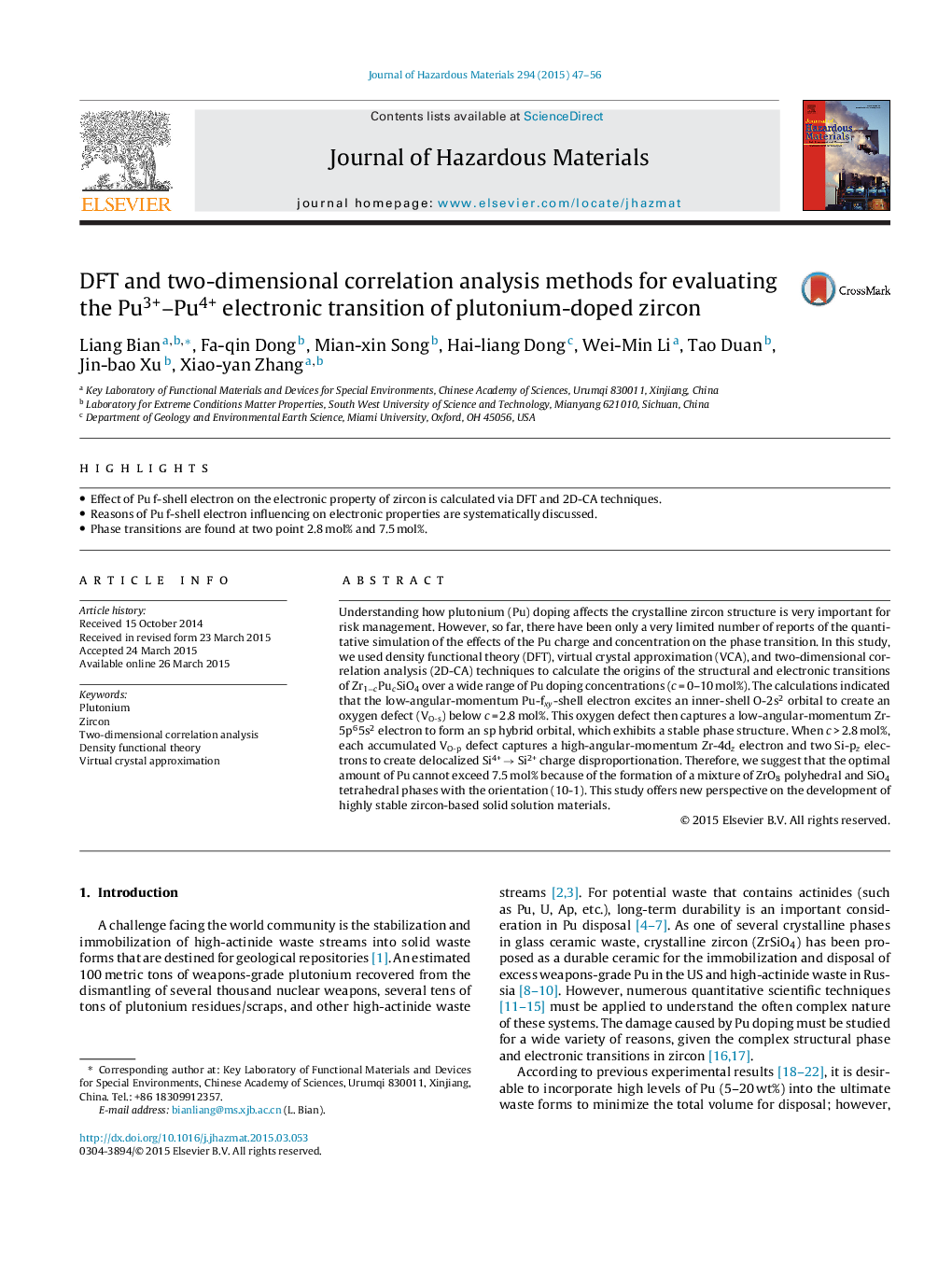| کد مقاله | کد نشریه | سال انتشار | مقاله انگلیسی | نسخه تمام متن |
|---|---|---|---|---|
| 576002 | 1453066 | 2015 | 10 صفحه PDF | دانلود رایگان |
عنوان انگلیسی مقاله ISI
DFT and two-dimensional correlation analysis methods for evaluating the Pu3+-Pu4+ electronic transition of plutonium-doped zircon
دانلود مقاله + سفارش ترجمه
دانلود مقاله ISI انگلیسی
رایگان برای ایرانیان
کلمات کلیدی
موضوعات مرتبط
مهندسی و علوم پایه
مهندسی شیمی
بهداشت و امنیت شیمی
پیش نمایش صفحه اول مقاله

چکیده انگلیسی
Understanding how plutonium (Pu) doping affects the crystalline zircon structure is very important for risk management. However, so far, there have been only a very limited number of reports of the quantitative simulation of the effects of the Pu charge and concentration on the phase transition. In this study, we used density functional theory (DFT), virtual crystal approximation (VCA), and two-dimensional correlation analysis (2D-CA) techniques to calculate the origins of the structural and electronic transitions of Zr1âcPucSiO4 over a wide range of Pu doping concentrations (c = 0-10 mol%). The calculations indicated that the low-angular-momentum Pu-fxy-shell electron excites an inner-shell O-2s2 orbital to create an oxygen defect (VO-s) below c = 2.8 mol%. This oxygen defect then captures a low-angular-momentum Zr-5p65s2 electron to form an sp hybrid orbital, which exhibits a stable phase structure. When c > 2.8 mol%, each accumulated VO-p defect captures a high-angular-momentum Zr-4dz electron and two Si-pz electrons to create delocalized Si4+ â Si2+ charge disproportionation. Therefore, we suggest that the optimal amount of Pu cannot exceed 7.5 mol% because of the formation of a mixture of ZrO8 polyhedral and SiO4 tetrahedral phases with the orientation (10-1). This study offers new perspective on the development of highly stable zircon-based solid solution materials.
ناشر
Database: Elsevier - ScienceDirect (ساینس دایرکت)
Journal: Journal of Hazardous Materials - Volume 294, 30 August 2015, Pages 47-56
Journal: Journal of Hazardous Materials - Volume 294, 30 August 2015, Pages 47-56
نویسندگان
Liang Bian, Fa-qin Dong, Mian-xin Song, Hai-liang Dong, Wei-Min Li, Tao Duan, Jin-bao Xu, Xiao-yan Zhang,